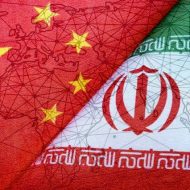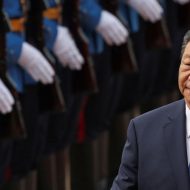There is a saying made famous by my dear older irreplaceable journalist and author Uğur Mumcu, who was assassinated by Gladio: “Having an opinion without knowledge!”
The ancient Chinese philosopher Confucius penned the following version of this proverb in the second book of “The Analects”: “Learning without pondering is pointless. It is risky to think without studying”.
Plato, who lived nearly a century after Confucius, condemns developing conclusions without understanding in the fourth chapter of his book “The Republic” as follows: “Haven’t you noticed that opinion without knowledge is always a poor thing? At the best it is blind—isn’t anyone who holds a true opinion without understanding like a blind man on the right road?”
I feel compelled to remind folks of this proverb whenever I hear them make significant claims about the Chinese real estate market.
Because, they do not know China’s land and housing ownership system, nor China’s system of governance. In China, the ownership of buildings belongs to the public! In the “sale” of housing, only the right of use can be transferred. The right to use is limited to 75 years for residential buildings and 50 years for commercial buildings. China has a public, planned economy. Not everything is left to the market.
In response to the widespread belief that “China’s real estate sector is booming and/or will boom indefinitely,” we present for your consideration a comprehensive analysis titled “Is China’s Housing Market in Trouble” by Dongsheng (Voices from the East), a website published by a group of Chinese academics and researchers living in Western countries who are dedicated to explaining China to the outside world. (1)
Mao Zedong’s housing revolution
When the Chinese people under the leadership of Mao Zedong founded the People’s Republic of China (PRC) in 1949, it was among the poorest countries in the world. Only 11% of the population of 552 million lived in urban areas.
After the establishment of the PRC, urban land was nationalized and house selling was abolished. Since 1953, rural land ownership in China has been collective, and urban land ownership has been public. For over 30 years, a housing system was in place where buildings were constructed and managed by government agencies, public organizations, or state-owned enterprises (SOEs), etc. In the early 1980s, 75% of urban households in China lived in state-owned housing at low rents.
A regulated housing market was established
With the “Reform and Opening Up” initiated in 1978, the state monopoly on investment policy was abolished. A mixed system with state, businesses, and individuals as investors was introduced. After 1992, the rulers handed the housing market to the private sector. By 1997, 9.64% of total investments were in real estate development. Per capita, housing construction area rose from 6.7 square meters in 1978 to 17.8 square meters in 1997.
With the implementation of the Chinese-style “Socialist Market Economy”, the share of private capital in the real estate sector increased tremendously. In 1993, there were only 505 private construction companies in China; this number increased to over 122,000 in 2021. Public and collective ownership in the construction sector was gradually replaced by private capital. By 2021, both foreign and domestic private capital owned 86% of the gross value added in the construction sector. The private sector accounts for 89.6% of construction workers.
In 70 years, China has achieved the biggest development spurt in history. However, it is still a “developing” country in terms of its urbanization rate. China’s urbanization rate reached 65% in 2022. This rate is far behind that of developed countries and even lower than that of developing countries, such as Türkiye! (2)
The cost of opening the housing sector to private capital
Since the 1990s, local governments have been authorized to transfer land use rights to “qualified entities”. On paper, this is called “transfer”, but it is a fixed-term sale. In 2018, 89% of the local government’s budget revenues came from land sales. But the “qualified entities” have increasingly become private construction companies.
Local governments are raising the price of land to generate more revenue. The local government spends the revenue from land financing on urban construction such as roads, hospitals, and schools, thus transforming suburban land into new urban areas. As urban construction expands, demand for land increases, which drives up land prices.
A major source of corruption in China is the private plunder of urban rents that should be collected as public revenue. This is why, before Xi Jinping was elected General Secretary of the CPC, there was a practice of auctioning off the chairmanships of village committees near big cities like Beijing and Shanghai.
After Xi came to power, he introduced “fair market value” for land prices and measures to prevent urban rents from going into the pockets of individuals. The Xi administration also imposed restrictions on companies in the real estate sector. It was decided that companies other than real estate companies could not enter the real estate business. The way was paved for state housing companies.
There is no casino capitalism in China!
In the 2008 financial crisis, long-term housing loans were blamed as the culprit. However, casino capitalism was issuing derivatives and derivatives of mortgage loans, based on loans taken for houses that did not exist. For years the US government encouraged this bubble to inflate because they too were getting a big share of the loot. It was inevitable that such an absurd speculation system would burst. But finance capital, which had become too big for its britches through globalization, did not learn from this collapse. The Western financial system is heading for an even deeper crisis.
In August 2020, with a “mature real estate market” by Western standards, the Chinese government issued a regulation known as the “three red lines”, which provides three key indicators of the financial health of real estate developers. The regulation limited the ratios of real estate companies’ debt to cash assets, equity, and book assets. It secured the sector’s sustainable growth while preventing a crisis.
The government asked real estate companies to align their finances according to the “three red lines” by 2023. To get new loans, they had to meet the criteria. A year later, all but two companies, including the famous Evergrande, were in a position to apply for new loans. China’s handling of the Evergrande crisis merits a separate analysis. China didn’t save this huge company, but it didn’t let it fail either. The government controlled the company’s income and expenditure and solved the problems before a debt crisis erupted.
Xi Jinping: “Houses are for living, not for speculation!”
In China, owning a house is a prerequisite for marriage. The most common practice of traditional Chinese modesty is home ownership. As a result of this cultural foundation and the increasing purchasing power of the population, China has become one of the most prosperous countries in the world in urban home ownership. While the rate of urban home ownership is around 60% in the US and Japan, it reached 96% in China in 2019. In China, 58.4% of households own 1 dwelling, 31% own 2 dwellings, and 10.5% own 3 or more dwellings.
The high demand resulting from rapid population growth, especially in big cities, has pushed housing prices even higher. On the other hand, in many smaller cities and rural areas, there has been a surplus of housing.
Although the crisis has been averted, the housing issue remains a very serious task for the CPC. Chinese President Xi Jinping made an important statement on this issue at the 19th National Congress of the CPC in October 2017: “Houses are for living, not for speculation!”
The policies quoted above have been implemented to put this principle into practice. Various instruments are also being developed to prevent the speculative use of housing. One way is to extend the property tax to include real estate tax for residential use.
In August 2021, Xi Jinping took the most decisive step towards making this a reality by announcing a new pilot program to be implemented in several cities across China. This decision is based on the CPC’s principle that “the indispensable goal of socialism is shared prosperity”. This is because the purchase of second and third homes for investment purposes is seen as both an indicator and a source of wealth inequality in China. (3)
The solution is publicism
Based on the lessons learned from the pilot, the housing tax will be introduced nationwide. According to the plan, the housing tax will be gradually increased on second and third homes.
The Chinese government has also intervened to address the rising housing rents that have become a serious problem in big cities. In 2021, a 5% cap on rent increases limited skyrocketing rents.
Building more communal housing is the actual solution. Since the Xi administration, China has focused public funds on enhancing the living circumstances of lower-income populations in the areas of education, health, and housing. Between the years 2021 and 2025, the Chinese government will build 6.5 million additional low-cost rental homes in 40 major cities to make it easier for young people and others with limited purchasing power to acquire housing.
Despite rapid supply expansion, home costs in big cities remain well out of reach for most people. China is going through a housing transition era, restricting the role of the private sector and handing greater authority to the government. From 2049 onwards, the CPC is expected to implement more radical measures as it strives to create a “strong, modern socialist country.”
Sources
1. https://dongshengnews.org/en/is-china-housing-market-in-trouble/
2. https://worldpopulationreview.com/country-rankings/most-urbanized-countries
3. https://www.china-briefing.com/news/explainer-whats-going-on-in-chinas-property-market/









Leave a Reply